Vimar 14457.TR Handleiding
Vimar
Niet gecategoriseerd
14457.TR
Bekijk gratis de handleiding van Vimar 14457.TR (6 pagina’s), behorend tot de categorie Niet gecategoriseerd. Deze gids werd als nuttig beoordeeld door 19 mensen en kreeg gemiddeld 5.0 sterren uit 10 reviews. Heb je een vraag over Vimar 14457.TR of wil je andere gebruikers van dit product iets vragen? Stel een vraag
Pagina 1/6

Viale Vicenza, 14
36063 Marostica VI - Italy
www.vimar.com
49400222D0 04 2203
EIKON
20457
20457.TR
ARKÉ
19457
19457.TR
IDEA
16927
PLANA
14457
14457.TR
VISTA FRONTALE.
Lettore di carte a transponder per installazione all’esterno della stanza,
standard KNX, 2 uscite a relè NO 4 A 24 V~, 2 ingressi, alimentazione
12-24 V~ 50-60 Hz e 12-24 V d.c. (SELV), grigio, - 3 moduli.
Il dispositivo consente, attraverso carte a transponder, il controllo degli accessi nei locali
dove esso è installato esternamente. Il lettore a transponder è provvisto di due relè per il
controllo della serratura della porta, per il comando di una luce di cortesia, o per altri usi
ancora; il dispositivo è inoltre provvisto di due ingressi per il collegamento di apparec-
chiature elettriche di tipo ON/OFF (ad esempio per il controllo dello switch di porta aperta
o chiusa, di un contatto magnetico per segnalazione finestra aperta o chiusa, allarme
tirante bagno, ecc.). Sul frontale del lettore sono presenti quattro led ognuno associato
un’icona per la segnalazione dei seguenti stati:
- Accesso (accesso consentito o accesso negato);
- Stato cliente (camera occupata o non disturbare);
- Stato chiamate (richiesta soccorso da tirante bagno, chiamata cameriera, ecc.).
- Stato servizi (rifare camera, ecc.);
Il lettore a transponder è in grado di dialogare con altri componenti EIB/KNX mediante
l’apposita interfaccia.
CARATTERISTICHE.
• Tensione di alimentazione:
- BUS: 29 V SELV
- 12-24 V ± 20% SELV
• Consumo:
- sul bus: 10 mA
- sull’alimentazione (a 12-24 V ): 130 mA max
• Morsetti:
- bus TP;
- alimentazione (12-24 V )
- ingressi digitali per 2 contatti NO o NC (privi di potenziale, SELV)
- uscite per 2 relè NO (24 V SELV 4 A cos~ 1; 24 V~ SELV 2 A cos 0,6)
• Range di frequenza: 13,553-13,567 MHz
• Potenza RF trasmessa: < 60 dBμA/m
• Temperatura di funzionamento: -5 °C - +45 °C (uso interno)
• Questo apparecchio contiene solo circuiti SELV che devono essere mantenuti separati
da circuiti a tensione pericolosa
FUNZIONAMENTO.
La configurazione del lettore, dell’indirizzo fisico, dei parametri (ingressi contatti NO o NC,
uscite relè normali o temporizzate, ecc.), avviene mediante il software ETS. Nel caso in
cui nel lettore a transponder venga caricato un applicativo ETS non corretto, lampeg-
geranno sia il led rosso posto sul retro del dispositivo che i led frontali 2, 3 e 4 (errore
di “device type”). Per ripristinare la configurazione desiderata, caricare nel dispositivo
l’applicativo ETS corretto.
La lettura della carta avviene posizionando la stessa di fronte al lettore che verifica
nell’ordine:
- “ ” (se coerente o meno);codice impianto
- campo “ ” (se abilitato verifica se la validità è scaduta o meno);data
- “ ” (verifica tutti i codici ad essa abbinati e abilitati quali codice cliente, codice password
di servizio, fasce orarie).
IMPORTANTE: I lettori a transponder vanno alimentati separatamente da tutti gli
altri carichi (elettroserrature, lampade, teleruttori,ecc.) mediante un trasformatore
16887 a loro dedicato le cui uscite andranno utilizzate esclusivamente per questi
due dispositivi.
Importante: La lunghezza del cavo per il collegamento degli ingressi non deve superare
i 30 m.
N.B. In fase di installazione prevedere lunghezze di collegamento dei cavi che consen-
tano l’estrazione del dispositivo dalla scatola da incasso in modo tale da poter accedere
al pulsante di configurazione.
Per l’alimentazione a 12-24 V utilizzare alimentatori 12/24 V d.c. o trasformatori con
secondario in bassissima tensione di sicurezza (SELV) per servizio continuo; non utilizzare
i trasformatori di tensione per campanelli.
REGOLE DI INSTALLAZIONE.
L’installazione deve essere effettuata da personale qualificato con l’osservanza delle
disposizioni regolanti l’installazione del materiale elettrico in vigore nel paese dove i
prodotti sono installati.
ATTENZIONE: Il lettore tropicalizzato (.TR) è conforme alle stesse regole di instal-
lazione del lettore tradizionale (uso interno a -5 °C - + 45 °C). Non è adatto ad
installazioni all’aperto dove sia esposto alla luce diretta del sole o alla pioggia,
(anche se abbinato a calotta stagna IP55) e per installazioni esposte a umidità e
nebbia salina è comunque consigliato l’utilizzo della calotta IP55.
CONFORMITÀ NORMATIVA.
Direttiva RED. Norme EN 50491, EN 60669-2-5, EN 300 330, EN 62479, EN 301 489-3.
VISTA DEL RETRO.
• PULSANTE configurazione: tasto per la commutazione tra modo normale o modo
programmazione o rilevamento dell’indirizzo fisico.
• LED spento: segnalazione “normale funzionamento.”
• LED rosso: segnalazione “modo indirizzamento” (il led si spegne automaticamente
dopo la programmazione dell’indirizzo fisico).
STATO DEI LED.
• LED 1:
- verde fisso: segnalazione “Accesso consentito” (il led rimane illuminato per circa 3 s).
- verde lampeggiante: segnalazione nel caso in cui la fascia oraria non sia valida (il led
lampeggia per circa 3 s).
- rosso fisso: segnalazione “Accesso negato” (il led rimane illuminato per circa 3 s).
- rosso lampeggiante: segnalazione nel caso in cui la data di scadenza non sia valida.
- ambra fisso: segnalazione nel caso in cui la codifica dell’impianto non sia valida.
- ambra lampeggiante: segnalazione nel caso in cui il giorno della settimana non sia valido.
- rosso/verde lampeggiante: sincronizzare l’orologio interno del dispositivo.
• LED 2:
- rosso: segnalazione “Non disturbare”.
- rosso lampeggiante: segnalazione “Camera occupata”.
• LED 3: ambra - segnalazione “Chiamata cameriera”.
• LED 4: verde - segnalazione “Rifare camera”.
Nota.
Il significato assunto dalla segnalazione dei led dipende dagli oggetti di comunicazione (quindi dalle
funzioni) che vengono configurati nel lettore attraverso il software ETS. Per tutte le applicazioni nelle quali
il dispositivo viene configurato con funzioni e segnalazioni dei led diverse da quelle standard, il cliente
potrà richiedere a Vimar la personalizzazione al laser dei simboli sul frontale del lettore.
Pulsante di configurazione
LED
C NO
C NO
Relè 1
Relè 2
Alimentazione
12-24 V ~
IN1
IN2
Comune
ingressi
1 e 2
Linea BUS
1
2
3
4
Vimar SpA dichiara che l’apparecchiatura radio è conforme alla direttiva 2014/53/UE. Il
testo completo della dichiarazione di conformità UE è disponibile nella scheda di prodot-
to al seguente indirizzo Internet: www.vimar.com.
Regolamento REACh (UE) n. 1907/2006 – art.33. Il prodotto potrebbe contenere tracce
di piombo.
RAEE - Informazione agli utilizzatori
Il simbolo del cassonetto barrato riportato sull’apparecchiatura o sulla sua confezione indica che il prodotto alla fine della
propria vita utile deve essere raccolto separatamente dagli altri rifiuti. L’utente dovrà, pertanto, conferire l’apparecchiatura
giunta a fine vita agli idonei centri comunali di raccolta differenziata dei rifiuti elettrotecnici ed elettronici. In alternativa alla
gestione autonoma, è possibile consegnare gratuitamente l’apparecchiatura che si desidera smaltire al distributore, al mo-
mento dell’acquisto di una nuova apparecchiatura di tipo equivalente. Presso i distributori di prodotti elettronici con superfi-
cie di vendita di almeno 400 m2
è inoltre possibile consegnare gratuitamente, senza obbligo di acquisto, i prodotti elettronici
da smaltire con dimensioni inferiori a 25 cm. L’adeguata raccolta differenziata per l’avvio successivo dell’apparecchiatura
dismessa al riciclaggio, al trattamento e allo smaltimento ambientalmente compatibile contribuisce ad evitare possibili ef-
fetti negativi sull’ambiente e sulla salute e favorisce il reimpiego e/o riciclo dei materiali di cui è composta l’apparecchiatura.

Viale Vicenza, 14
36063 Marostica VI - Italy
www.vimar.com
49400222D0 04 2203
EIKON
20457
20457.TR
ARKÉ
19457
19457.TR
IDEA
16927
PLANA
14457
14457.TR
FRONT VIEW.
Transponder card reader for installation outside rooms, KNX standard, 2
NO 4 A 24 V~ relay outputs, 2 inputs, power supply 12-24 V~ 50-60 Hz
and 12-24 V d.c. (SELV) - 3 modules.
The device, with transponder cards, enables controlling entry to the rooms where it is
installed externally. The transponder reader is provided with two relays to control the door
lock, to control a courtesy light, or for other uses; the device is moreover provided with
two inputs for connecting electrical equipment of the ON / OFF type (for example to con-
trol the switch for door opening and closing, a magnetic contact for signalling windows
open or closed, ceiling pull alarm, etc.). On the front of the reader there are four LEDs
each of which associated with an icon for signalling the following states:
- Access (entry allowed or entry denied);
- Guest status (room occupied or do not disturb);
- Call status (rescue request with bathroom ceiling pull-cord, room service call, etc.);
- Services status (make up room, etc.).
The transponder reader is able to dialogue with other KNX components via the specific
interface.
CHARACTERISTICS.
• Supply voltage:
- BUS: 29 V SELV
- 12-24 V ± 20% SELV
• Consumption:
- on the bus: 10 mA
- on the power supply (at 12-24 V ): 130 mA max
• Terminals:
- TP bus
- power supply (12-24 V )
- digital inputs for 2 NO or NC contacts (with no potential, SELV)
- outputs for 2 NO relays (24 V~ SELV 4 A cos 1; 24 V~ SELV 2 A cos 0.6)
• Frequency range: 13,553-13,567 MHz
• RF transmission power: < 60 dBμA/m
• Operating temperature: -5 °C - +45 °C (inside)
• This device contains only SELV circuits that must be kept separate from circuits with
dangerous voltage
OPERATION.
The configuration of the reader, physical address and parameters (NO or NC contact
inputs, normal or timed relay outputs, etc.) is done with the ETS software.
If the transponder reader is loaded with an incorrect ETS application, both the red LED
on the back of the device and the front LEDs 2, 3 and 4 will blink (“device type” error).
To restore the desired configuration, load the device with the correct ETS application.
The card is read by putting it in front of the reader that in sequence checks:
- “ ” (whether consistent); system code
- “ ” field (if enabled, it checks whether the validity has expired); date
- “ ” (checks all the codes associated with it and enabled, such as guest code, password
service code, timeframes).
IMPORTANT: The transponder card readers should be fed separately from all other
loads (electric locks, lamps, contactors, etc.) using a 16887 transformer dedicated
to them whose outputs will be used only for these two devices.
Important: The length of the cable for connecting the inputs must not exceed 30 m.
NB: In the phase of installation provide for cable connection lengths that allow extracting
the device from the flush mounting box so as to be able to access the configuration
button.
For the 12-24 V power supply use 12/24 V d.c. power supplies or transformers with
secondary winding having extra low voltage (SELV) for continuous service; do not use
the voltage transformers for doorbells.
INSTALLATION RULES.
Installation should be carried out by qualified staff in compliance with the current regula-
tions regarding the installation of electrical equipment in the country where the products
are installed.
CAUTION: The tropicalised reader (.TR) complies with the same installation rules
as the traditional reader (indoor use at -5 °C - + 45 °C). It is not suitable for outdoor
installations where it is exposed to direct sunlight or rain, (even when combined
with a watertight IP55 cover) and for installations exposed to humidity and salt fog,
the use of the IP55 cover is nevertheless recommended.
CONFORMITY.
RED directive.
Standards EN 50491, EN 60669-2-5, EN 300 330, EN 62479, EN 301 489-3.
REAR VIEW.
• Configuration BUTTON: button for switching between normal mode or programming
mode or detecting the physical address.
• LED off: “normal operation” indicator.
• Red LED: “addressing mode” indicator (the LED goes out automatically after program
-
ming the physical address).
LED STATUS.
• LED 1:
- steady green: signalling “Entry allowed” (the LED remains illuminated for approxi-
mately 3 s).
- blinking green: signalling if the timeframe is not valid (the LED blinks for approxi-
mately 3 s).
- steady red: signalling “Entry denied” (the LED remains illuminated for approxima-
tely 3 s).
- blinking red: signalling if the expiry date is not valid.
- steady amber: signalling if the system coding is not valid.
- blinking amber: signalling if the day of the week is not valid.
- blinking red/green: synchronize the device’s internal clock.
• LED 2:
- red: signalling “Do Not Disturb”.
- blinking red: signalling “Room occupied”.
• LED 3: amber - signalling “Room service call.”
• LED 4: green - signalling “Make up room.”
Note.
The meaning taken on by the LEDs depends on the subjects of communication (therefore the functions)
that are configured in the reader with the ETS software. For all the applications in which the device is
configured with different functions and LED indications to the standard ones, the customer can ask
Vimar to customize the symbols on the front of the reader with a laser.
Configuration BUTTON
LED
CNO
C
Relay 1
Relay 2
IN1
IN2
Common
inputs
1 and 2
BUS line
NO
Power supply
12-24 V ~
1
2
3
4
Vimar SpA declares that the radio equipment complies with Directive 2014/53/EU. The
full text of the EU declaration of conformity is on the product sheet available at the fol-
lowing Internet address: www.vimar.com.
REACH (EU) Regulation no. 1907/2006 – Art.33. The product may contain traces of
lead.
WEEE - Information for users
If the crossed-out bin symbol appears on the equipment or packaging, this means the product must not be included with
other general waste at the end of its working life. The user must take the worn product to a sorted waste center, or return it to
the retailer when purchasing a new one. Products for disposal can be consigned free of charge (without any new purchase
obligation) to retailers with a sales area of at least 400 m
2, if they measure less than 25 cm. An efficient sorted waste collec-
tion for the environmentally friendly disposal of the used device, or its subsequent recycling, helps avoid the potential negati-
ve effects on the environment and people’s health, and encourages the re-use and/or recycling of the construction materials.

Viale Vicenza, 14
36063 Marostica VI - Italy
www.vimar.com
49400222D0 04 2203
EIKON
20457
20457.TR
ARKÉ
19457
19457.TR
IDEA
16927
PLANA
14457
14457.TR
VUE DE FACE.
Lecteur de cartes transponder pour installation à l’extérieur de la pièce,
standard KNX, 2 sorties à relais NO 4 A 24 V~, 2 entrées, alimentation
12-24 V~ 50-60 Hz et 12-24 V d.c. (SELV) - 3 modules.
La carte à transpondeur permet au dispositif de contrôler les accès des locaux à l’extérieur
desquels il est installé. Le lecteur à transpondeur possède deux relais qui commandent la
serrure de la porte, l’éclairage de courtoisie, etc. Le dispositif a également deux entrées
permettant de connecter des appareils électriques de type ON/OFF (par exemple, surveil-
lance de l’interrupteur gérant l’ouverture et la fermeture de la porte, contact magnétique
signalant l’ouverture et la fermeture des fenêtres, alarme salle de bains, etc). Sur la façade
du lecteur, quatre leds sont associées à une icône qui signale les états suivants.
- Accès (autorisé ou refusé)
- État client (chambre occupée ou ne pas déranger)
- État des appels (demande de secours salle de bains, appel femme de chambre, etc.)
- États des services (refaire la chambre, etc).
Le lecteur à transpondeur dialogue avec les autres composants KNX grâce à une inter-
face spéciale.
CARACTÉRISTIQUES.
Tension d’alimentation:
- BUS : 29 V SELV
- 12-24 V ± 20% SELV
• Consommation
- sur le bus: 10 mA
- sur l’alimentation (à 12-24 V ): 130 mA maxi
• Bornes
- bus TP
- alimentation (12-24 V )
- entrées numériques pour 2 contacts NO ou NF (sans potentiel, SELV)
- sorties pour 2 relais NO (24 V~ SELV 4 A cos 1 ; 24 V~ SELV 2 A cos 0,6)
• Plage de fréquence: 13,553-13,567 MHz
• Puissance RF transmise: < 60 dBμA/m
• Température de fonctionnement - 5 °C - + 45 °C (usage intérieur)
• Cet appareil contient uniquement des circuits SELV qui doivent rester séparés des
circuits à tension dangereuse
FONCTIONNEMENT.
La configuration du lecteur, de l’adresse physique, des paramètres (entrées contacts
NO ou NF, sorties relais normales ou temporisées etc.) s’effectue via le logiciel ETS. Si
une application ETS incorrecte a été téléchargée dans le lecteur à transpondeur, la led
rouge au dos du dispositif se met à clignoter ainsi que les leds 2, 3 et 4 en façade (erreur
“device type”). Pour rétablir la configuration désirée, charger le logiciel ETS correct dans
le dispositif.
Pour lire la carte, la placer face au lecteur qui vérifie dans l’ordre suivant :
- le “ ” (cohérence) code installation
- le champ “ ” (s’il est activé, il contrôle sa validité) date
- le “ ” (il contrôle tous les codes associés et validés comme le code client, mot de passe
le code service, les tranches horaires).
IMPORTANT: Les lecteurs de cartes transponder doivent être nourris séparément
de toutes les autres charges (serrures électriques, lampes, contacteurs, etc) en
utilisant un transformateur 16887 qui leur est dédié dont les sorties ne seront
utilisés que pour ces deux appareils.
Important: la longueur du câble pour le raccordement des entrées ne doit pas dépasser
30 m.
N.B. Pendant l’installation, prévoir des longueurs de câble suffisantes pour extraire le
dispositif du boîtier encastré et accéder au bouton de configuration.
Pour l’alimentation 12-24 V , utiliser des alimentateurs 12/24 Vdc ou des transforma-
teurs avec secondaire sous très basse tension de sécurité (SELV) pour service continu,
ne pas utiliser de transformateur de tension pour sonnettes.
RÈGLES D’INSTALLATION.
L’installation doit être confiée à un technicien qualifié et exécutée conformément aux
dispositions qui régissent l’installation du matériel électrique en vigueur dans le pays
concerné.
ATTENTION : Le lecteur tropicalisé (.TR) applique les mêmes consignes d’installa-
tion que le lecteur traditionnel (usage intérieur de -5 °C à + 45 °C). Il ne peut pas
être installé à l’extérieur où il serait exposé à la lumière directe du soleil ou à la
pluie (y compris s’il est protégé par une calotte étanche IP55) mais peut être expo-
sé à l’humidité et au brouillard salin à condition de le protéger avec la calotte IP55.
CONFORMITÉ AUX NORMES.
Directive RED.
Normes EN 50491, EN 60669-2-5, EN 300 330, EN 62479, EN 301 489-3.
VUE DE ARRIÈRE.
• BOUTON de configuration: touche de commutation entre le mode normal, le mode
programmation et le relevé de l’adresse physique.
• LED éteinte: “fonctionnement normal“.
• LED rouge: “mode adressage” (la led s’éteint automatiquement après la programma
-
tion de l’adresse physique).
ÉTAT DES LEDS.
• LED 1
- Verte fixe : “Accès autorisé” (la led reste éclairée 3 s)
- Verte clignotante : la tranche horaire n’est pas valide (la led clignote 3 s)
- Rouge fixe : “Accès refusé” (la led reste allumée 3 s)
- Rouge clignotante : la date de péremption n’est pas valide
- Orange fixe : le code du circuit n’est pas valide
- Orange clignotante : le jour de la semaine n’est pas valide
- Rouge/verte clignotante : synchronise l’horloge interne du dispositif.
• LED 2:
- Rouge : “Ne pas déranger”.
- Rouge clignotante : “Chambre occupée”
• LED 3: orange - “Appel femme de chambre”
• LED 4: verte - “Refaire la chambre”.
Remarque.
La signification des leds dépend des objets de communication configurés par le lecteur avec le logiciel
ETS et de leurs fonctions. Dans les applications où la configuration des fonctions et de la signalisa-
tion du dispositif ne sont pas standard, le client peut demander à Vimar de personnaliser au laser les
symboles sur la façade du lecteur.
BOUTON configuration
LED
CNO
C NO
Relais 1
Relais 2
Alimentation
12-24 V ~
IN1
IN2
Commun
entrées
1 et 2
Lingne BUS
1
2
3
4
Vimar S.p.A. déclare que l’équipement radio est conforme à la directive 2014/53/UE. Le
texte complet de la déclaration de conformité UE est disponible sur la fiche du produit à
l’adresse Internet suivante: www.vimar.com.
Règlement REACH (EU) n° 1907/2006 – art.33. Le produit pourrait contenir des traces
de plomb.
DEEE - Informations pour les utilisateurs
Le symbole du caisson barré, là où il est reporté sur l’appareil ou l’emballage, indique que le produit en fin de vie doit
être collecté séparément des autres déchets. Au terme de la durée de vie du produit, l’utilisateur devra se charger de le
remettre à un centre de collecte séparée ou bien au revendeur lors de l’achat d’un nouveau produit. Il est possible de
remettre gratuitement, sans obligation d’achat, les produits à éliminer de dimensions inférieures à 25 cm aux revendeurs
dont la surface de vente est d’au moins 400 m
2. La collecte séparée appropriée pour l’envoi successif de l’appareil en fin
de vie au recyclage, au traitement et à l’élimination dans le respect de l’environnement contribue à éviter les effets négatifs
sur l’environnement et sur la santé et favorise le réemploi et/ou le recyclage des matériaux dont l’appareil est composé.
Product specificaties
| Merk: | Vimar |
| Categorie: | Niet gecategoriseerd |
| Model: | 14457.TR |
Heb je hulp nodig?
Als je hulp nodig hebt met Vimar 14457.TR stel dan hieronder een vraag en andere gebruikers zullen je antwoorden
Handleiding Niet gecategoriseerd Vimar
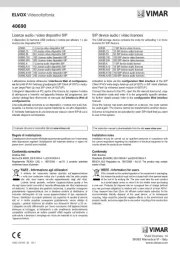
2 September 2025
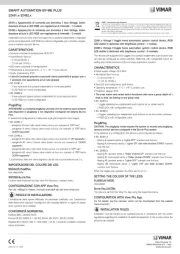
26 Augustus 2025
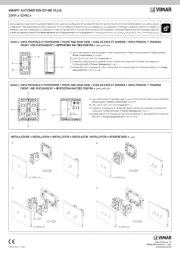
26 Augustus 2025
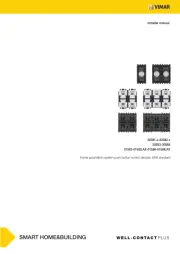
26 Augustus 2025
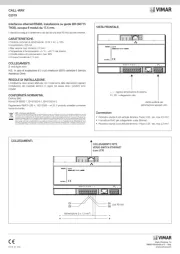
14 Augustus 2025
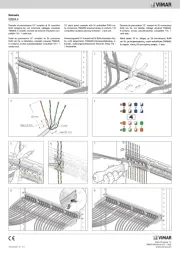
5 Juli 2025
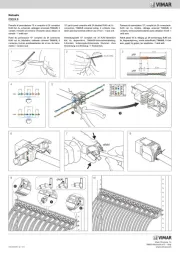
5 Juli 2025
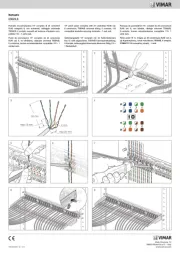
5 Juli 2025

5 Juli 2025
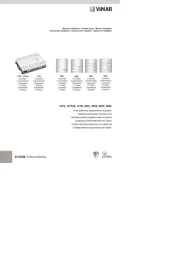
24 Mei 2025
Handleiding Niet gecategoriseerd
- Hähnel
- Newline
- BikeLogger
- O&O Software
- Singer
- Spectra Cine
- Coby
- Regula-Werk King
- Cornilleau
- Marvel
- City Theatrical
- InSinkErator
- MK
- Tellur
- Pico Macom
Nieuwste handleidingen voor Niet gecategoriseerd
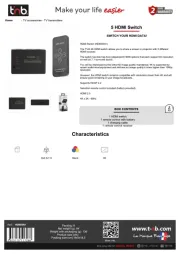
15 September 2025
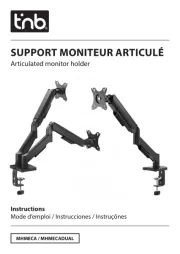
15 September 2025
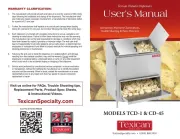
15 September 2025
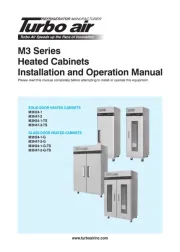
15 September 2025
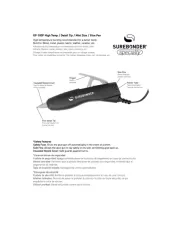
15 September 2025

15 September 2025
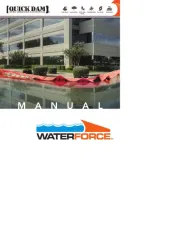
15 September 2025

15 September 2025
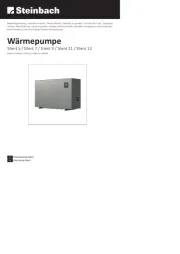
15 September 2025
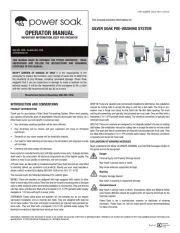
15 September 2025